Best fall-flowering perennials – 7 expert-approved blooms for late-season color
Fill your yard with vibrant seasonal color by growing some of the best fall-flowering perennials
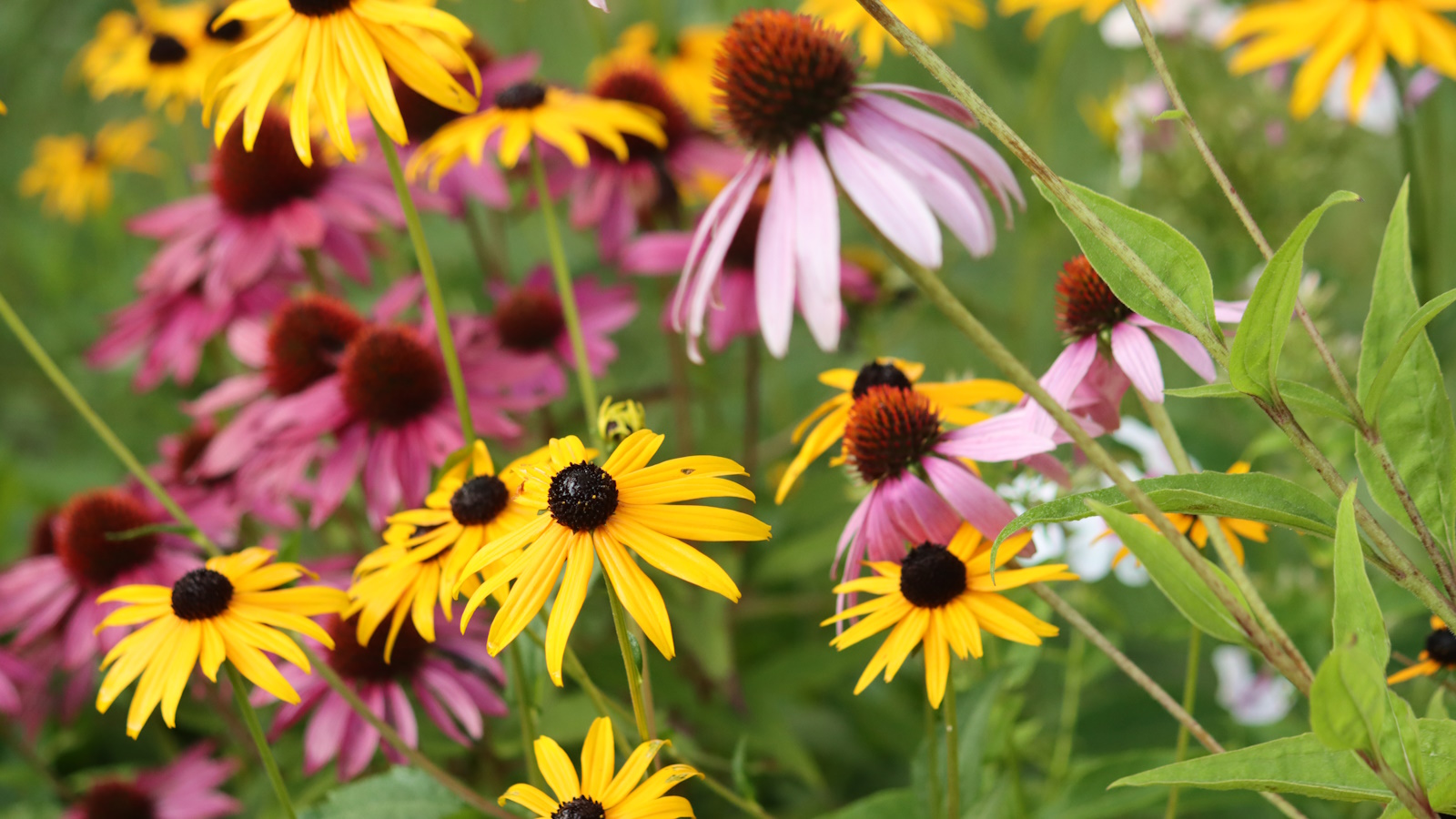

Despite shorter days and cooler temperatures as summer transitions to fall, many popular perennials will continue to put on vibrant displays in garden borders. While those long, hazy July days are a thing of the past, and winter is very much on the way, fall-blooming perennials will inject some late-season color into your yard.
From September and October, many annuals and summer-flowering perennials will begin to droop and fade, so it is a good idea to incorporate one, two or seven of these fall-flowering perennials to extend the gardening season. Think pink and purple asters, golden-yellow black-eyed Susans, red canna lilies or white persicaria blooms - whatever your preference, many perennials will keep flowering until the first frost.
Whether you are looking for fall-blooming native plants or something unique and unknown, our guide has some of the best plants to grow this year for a spectacular fall show that will not disappoint.
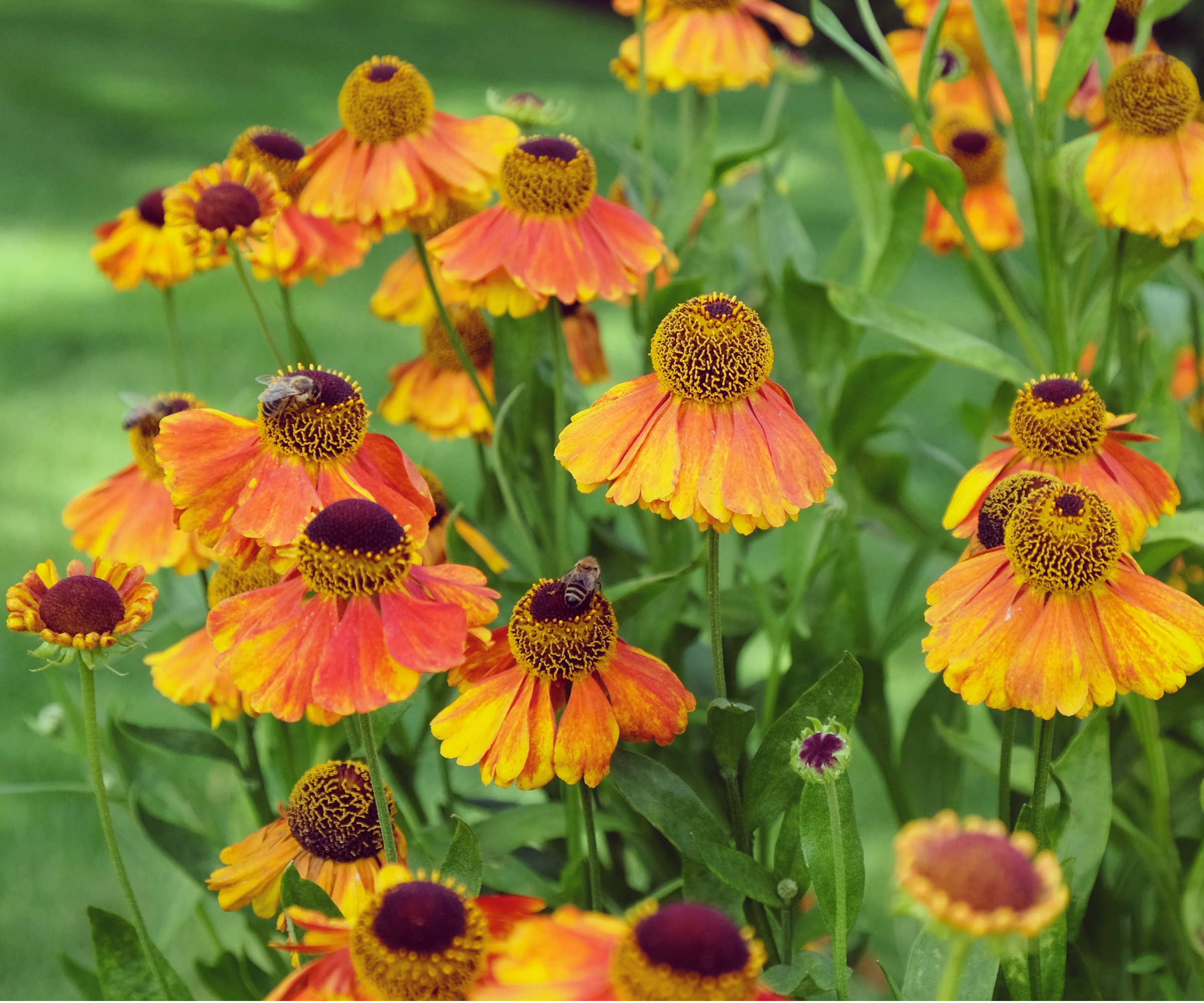
7 best fall-flowering perennials
While many of the best perennials are resilient, it is always best to plant what is suited to your region and US hardiness zone. For example, in cooler northerly zones, it is preferable to plant the native Verbena hastata, commonly known as blue vervain, which can tolerate freezing temperatures and will return year after year.
Strawflowers, however, are better suited to warmer, southerly zones, as while they are perennial plants, snow and frost will cause irreparable damage. The following expert-approved list of plants for fall color has all the information you need, including hardiness, to ensure that your yard thrives.
1. Black-eyed Susan
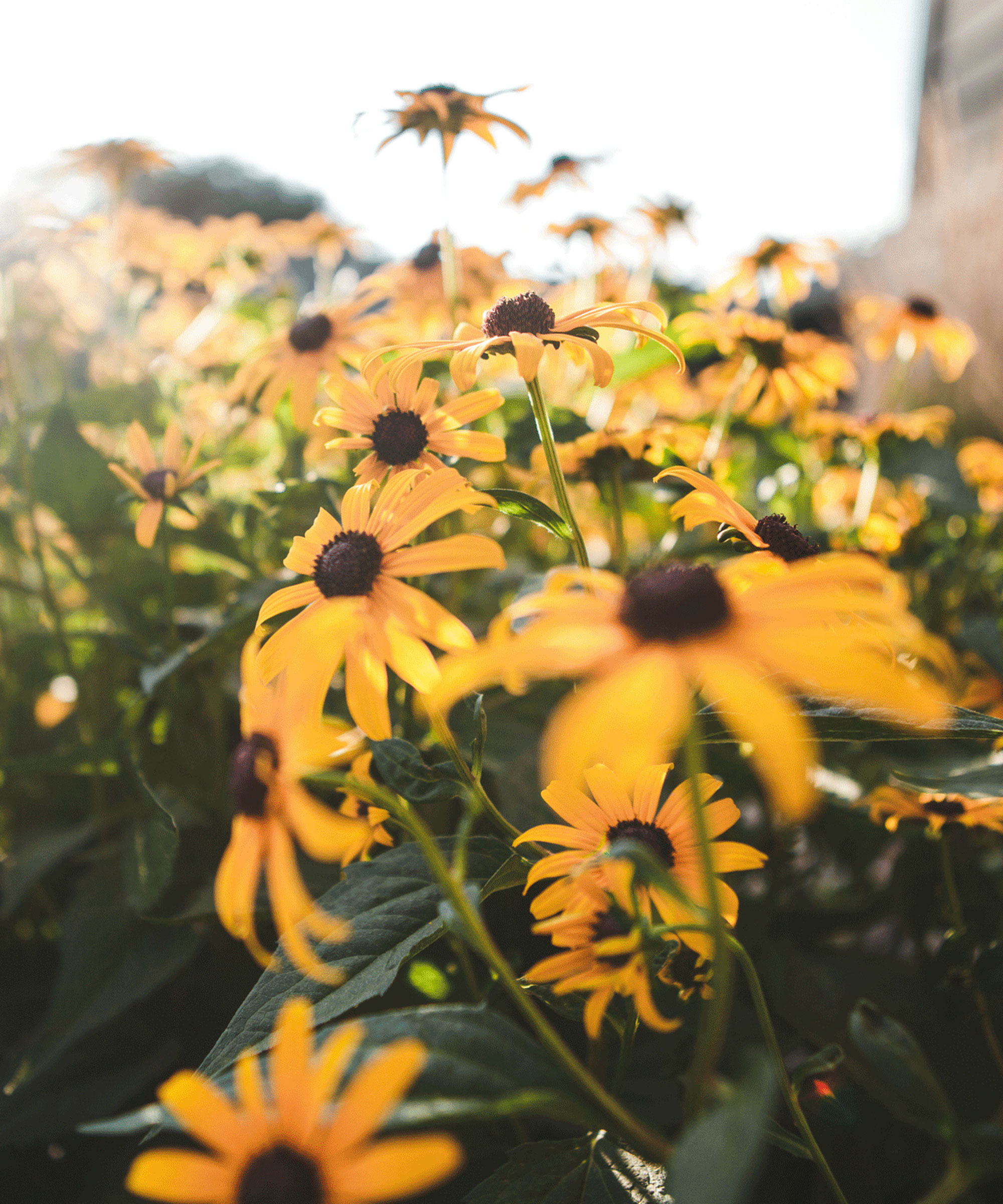
If you are looking to plant some of the longest-flowering perennials, it is hard to beat black-eyed Susans. These native plants are found growing across the prairies of North America, so they are well adapted to tolerate sun, wind and drought.
'Black-eyed Susans, or Rudbeckias, are some of the toughest perennials to grow,' says Sam Niemann, garden expert and founder of Grown by Design, a boutique landscape design firm based in San Diego. 'These native plants often produce golden, umber or crimson blooms, and will go on flowering late into the fall with little maintenance required.'
These classic perennials can be grown from US hardiness zone 3 and above and can be planted in your yard either in the fall or spring. Black-eyed Susan live plants are available to order from Walmart.

Sam is a lifelong gardener whose passion for plants and nature has been the driving force behind his extensive knowledge and expertise in horticulture. He studied at San Diego State University, earning a degree in Finance while simultaneously founding Grown by Design, a boutique landscape design firm and Bleume, a plant fertilizer start-up.
2. Asters
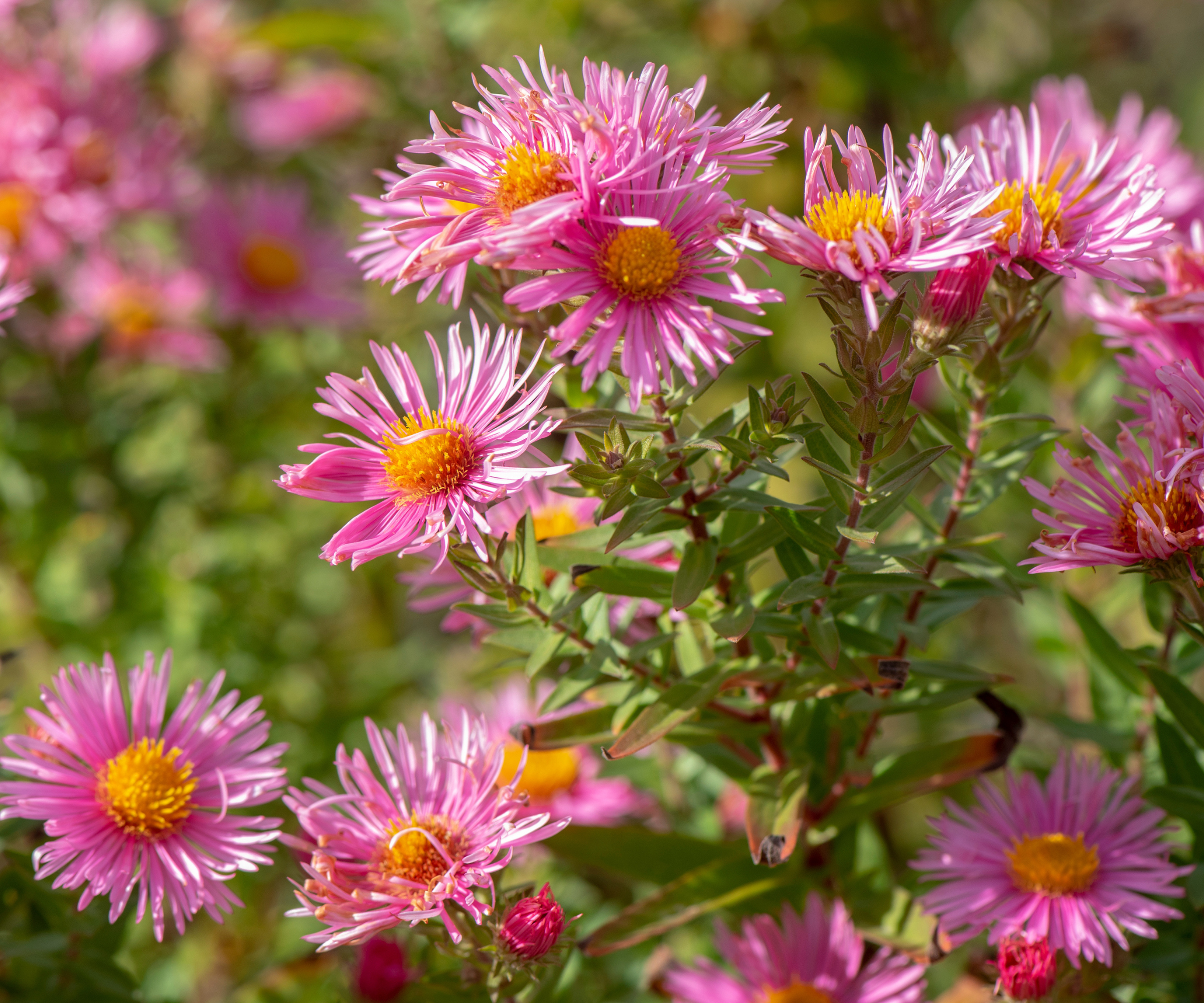
Asters are native to North America and can be found growing in prairie lands across many states. Many of the best Aster varieties are late-blooming, producing daisy-like flowers long into October and even November.
Asters are excellent plants for the back of the border, often reaching five or six feet tall. One of my favorites is the purple flowering New England aster, Symphyotrichum novae-angliae, which can be found growing across much of the central and northeastern United States and southeastern Canada. These purple blooms are also an important food source during the monarch butterfly migration, providing late-season nectar for the remarkable traveling butterflies. New England aster live plants are available from Walmart.
Typically, most asters can be grown from US hardiness zone 3 to US hardiness zone 8, and they are relatively resilient plants. I find they do best in moisture-retentive soil, so mulching your borders in the fall is a good idea to improve the structure and quality of your soil. Pine bark mulch is available from Walmart.
3. Japanese anemones
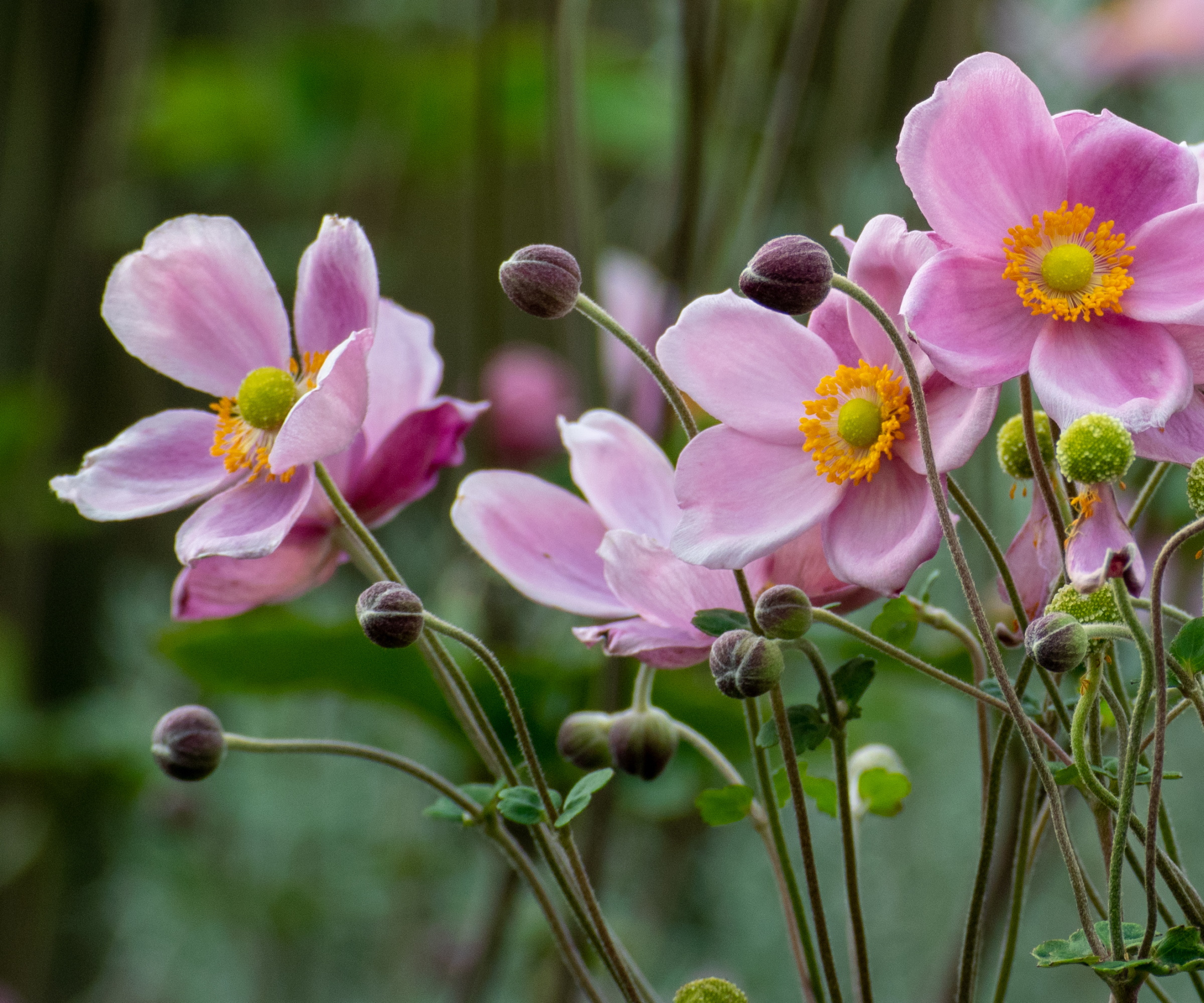
Japanese anemones are popular herbaceous perennials that can be grown in shady borders and yards. These late-season bloomers are notable for producing masses of pink or white flowers and can reach up to four or five feet tall. As woodland plants, Japanese anemones grow best in rich, fertile and slightly moist soil, so avoid planting in a free-draining yard.
Growing best in US hardiness zone 5 to zone 8, Japanese anemones are excellent plants for fall pollinators, helping to feed bees, birds and butterflies still active late in the year.
If you already have this perennial growing in your yard, fall is the perfect time to propagate Japanese anemones. From September, you can lift and divide this perennial, helping you to increase your fall-blooming collection in the year ahead.
Japanese anemone live plants are available to order from Walmart.
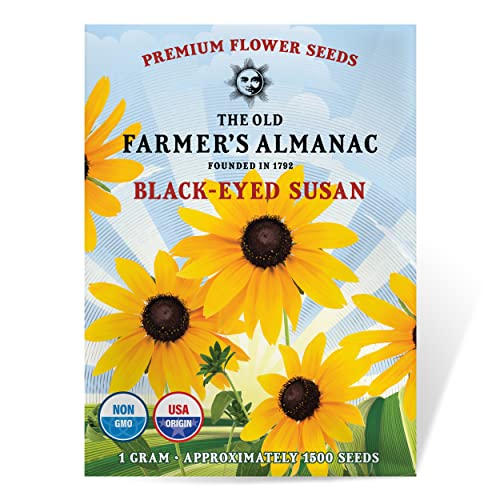
Black-eyed Susan plants are hardy natives found growing across North America. The vibrant blooms make for brilliant late season flowers in any yard.
4. Helenium
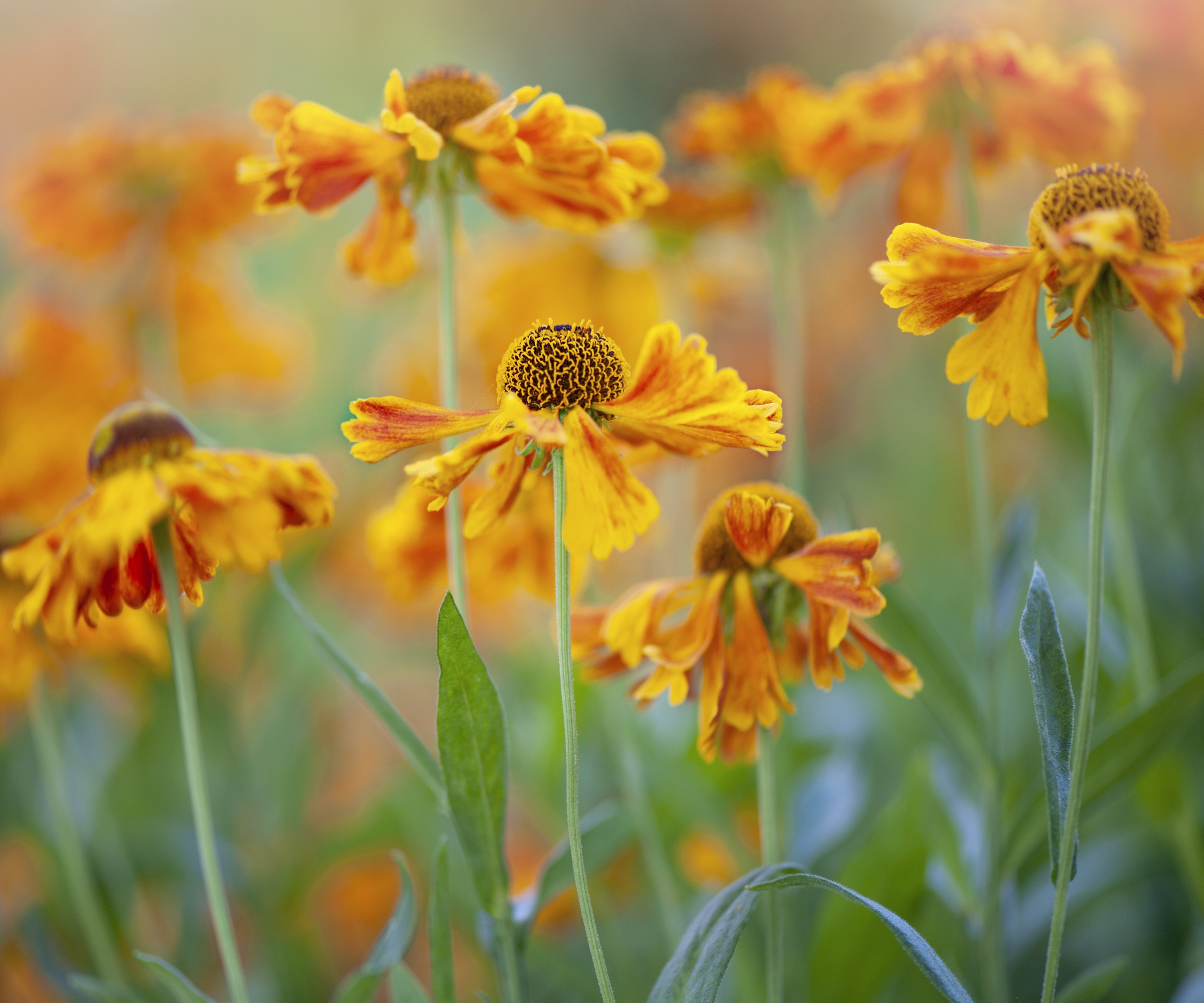
Heleniums are a group of herbaceous plants in the Asteraceae - or daisy - family. Commonly known as sneezeweeds, Heleniums are native to the Americas, thriving in open spots with a preference for full sun.
Growing best from US hardiness zone 6 plus, there are many different species and varieties of Helenium that come in a range of sizes and colors. One of my favorites is Helenium autumnale 'Autumn Leaves', available from Walmart, blooming in orange and red and lasting until the first frost. If you are looking for a fall-blooming perennial with impact, this is the plant to grow.
As with other tall-flowering perennials, it is a good idea to stake and support Helenium plants. Many species can reach up to four feet tall, and can suffer during high winds or storms. Alternatively, fill your borders with other tall plants, such as ornamental grasses, dahlias and shrubs that will provide support and protection during high winds.
Helenium seeds are available from Amazon.
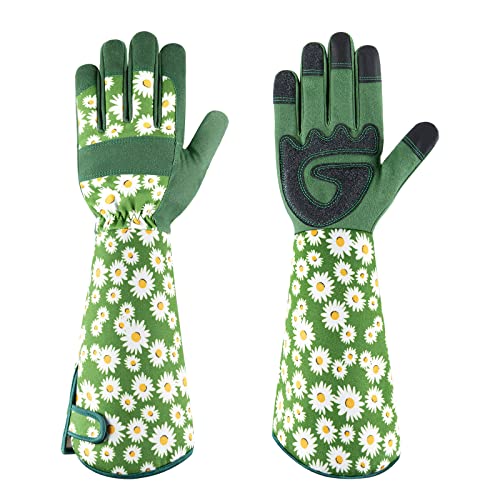
Made from breathable canvas materials, these soft and comfortable gloves are tough yet flexible, keeping you protected while completing your gardening tasks.
5. Persicaria
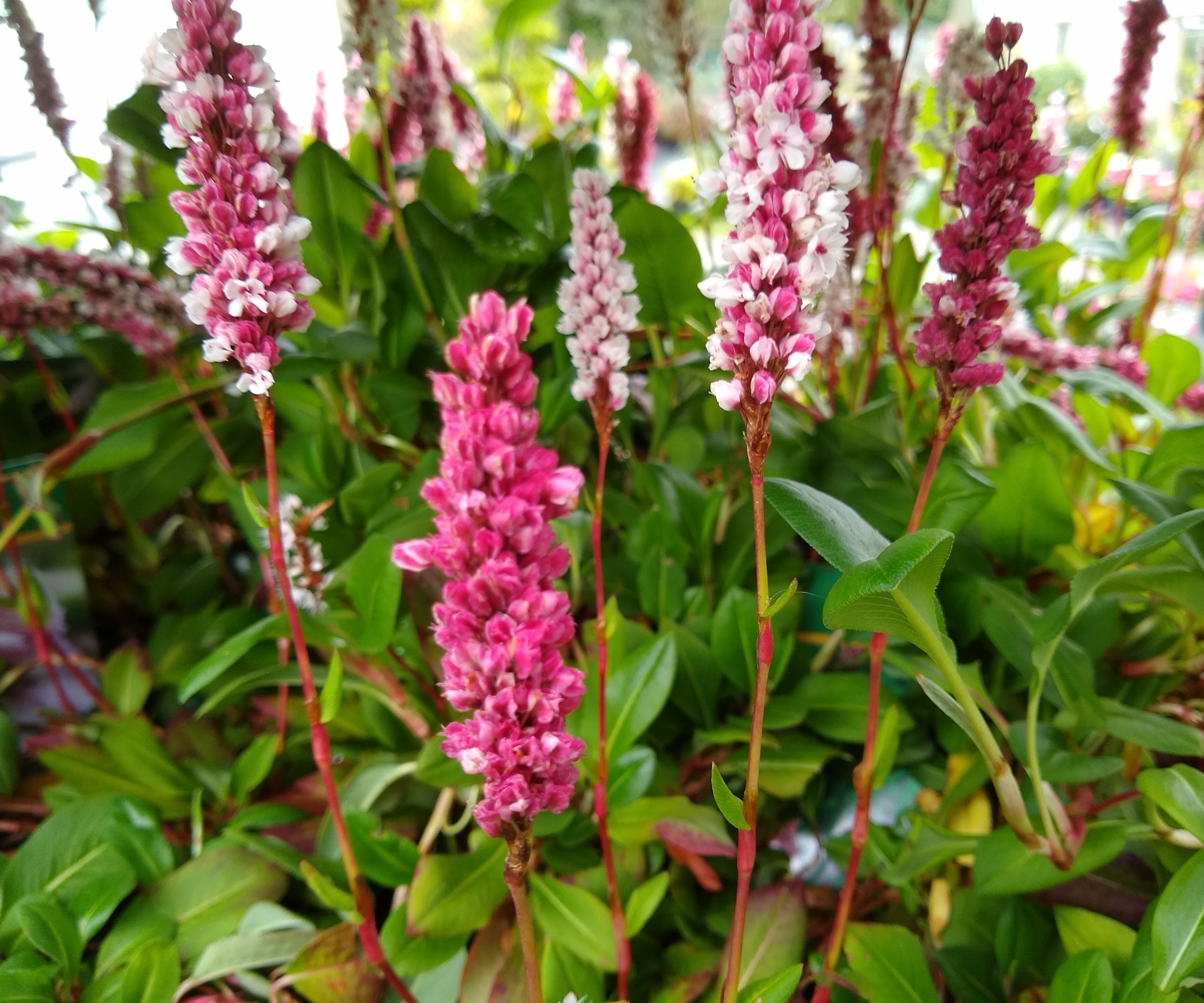
I have grown Persicaria in many different gardens where I have worked across the UK and in Italy. Whether planted under a tree in a shady yard or a sundrenched border, Persicaria plants seem to thrive in challenging conditions, leading many to consider these tough, robust perennials as ditch plants. During mild years, I have known Persicaria to go on flowering until November and even December.
Persicaria plants can be grown as perennials from US hardiness zone 4 to US hardiness zone 8, and while many species are native to Europe and Asia, there are a handful of native species found growing across North America.
One of my favorites is Persicaria virginiana, also called jumpseed, which has brilliant lime-green foliage with dark markings. This species is native to the eastern half of North America and grows well in partial to full shade, producing pink flower spikes late in the season.
Persicaria seeds are available to order from Amazon.
6. Strawflowers
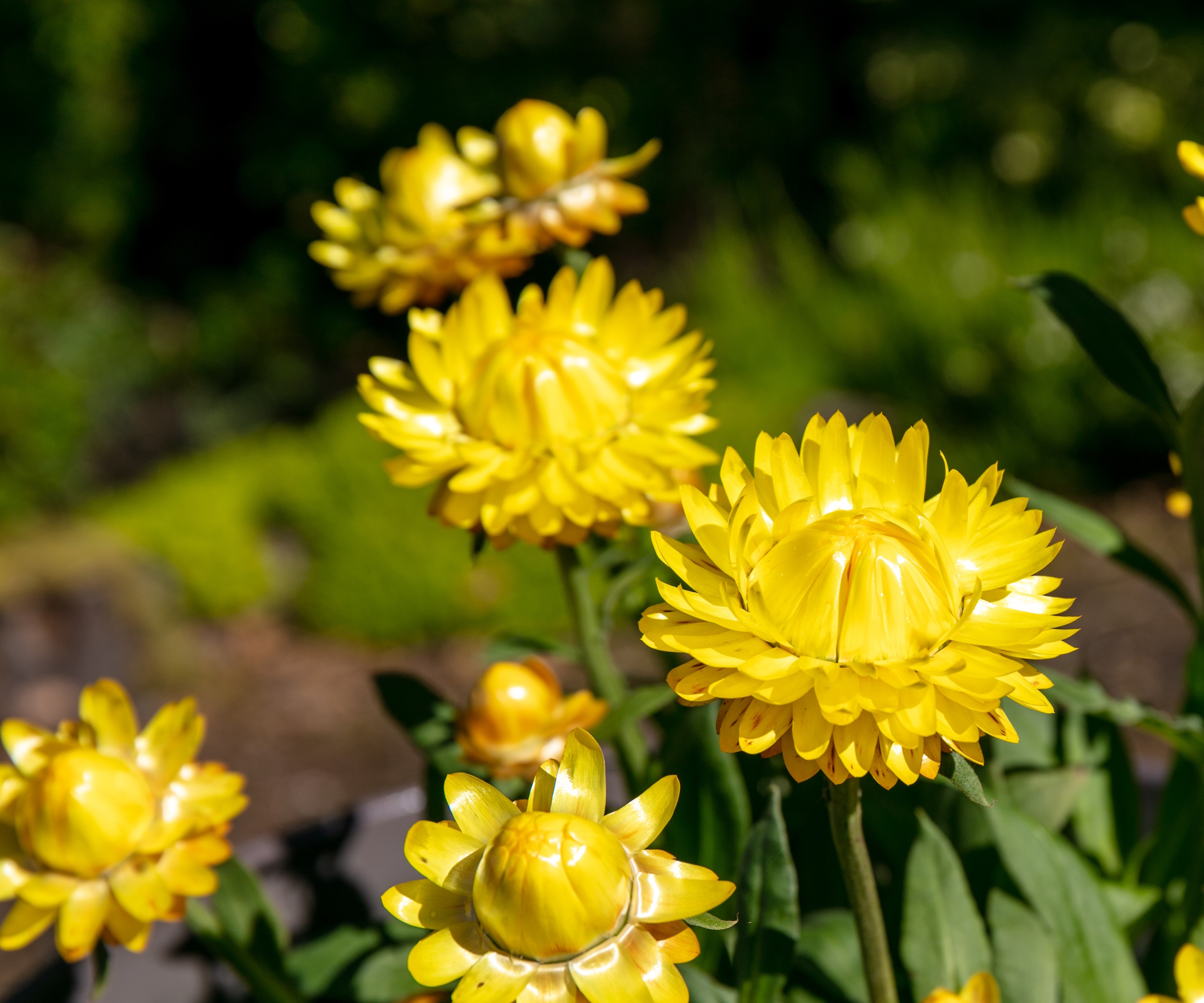
If you are planning a cut flower garden or would like to grow some unusual blooms to snip for vases in your home, strawflowers are impressive fall-flowering perennial plants to consider.
'Strawflowers are spectacular late-blooming plants,' says Rachel Bull, head of gardens at Homes & Gardens. 'As a flower grower and florist, I love using strawflowers for their sculptural and jewel-like blooms. Learning how to dry strawflowers is an easy way to create winter flower displays or fall wreaths to see you through until spring.'
Strawflowers, Xerochrysum bracteatum, are better suited to warmer climates, thriving in US hardiness zone 8 and zone 9, where the winters are mild. In cooler zones, this plant should be treated as an annual.
'Plant in a sunny spot and use a balanced flower fertilizer during the summer to prolong blooming,' Rachel says. 'With any luck, and regular deadheading, your plants should keep giving you beautiful blooms until the first cold snap.'
Strawflower seeds are available online from Amazon.

Rachel is a gardening editor, flower grower and floral designer. Her journalism career began on Country Living magazine, sparking a love of container gardening and wild planting. After more than a decade writing for and editing a range of consumer, business and special interest titles, Rachel became editor of floral art magazine The Flower Arranger. She then trained and worked as a floral designer and stylist in London for six years, before joining the Homes & Gardens team.
7. Canna lilies

If you are a fan of tropical garden ideas, learning how to grow canna lilies might be a good idea. These vibrant perennials will certainly add some late-season color to your plot while also keeping those end-of-summer blues at bay.
Canna lilies are perennial plants that thrive in sunny yards, and can be grown from US hardiness zone 6 to zone 10. In cooler zones, I suggest planting in a sheltered spot to provide some protection during the fall.
Generally speaking, canna lilies are easy to grow, and once established, they require little maintenance other than a spot of fertilizer every so often. In open or windy sites, it is best to stake the stems, as they can often reach up to six or even eight feet tall.
There are many different species and colors to choose from, and whatever your preference, you will probably be able to find a canna lily to suit your tastes. One variety that I have grown and would recommend is Canna × ehemannii, which can reach up to 10 feet tall. This variety produces bright pink blooms that go on flowering until the first frost.
Canna lily bulbs are available to order from Amazon.
FAQs
What are the best fall-flowering perennials to grow in pots?
Many of the best coneflower varieties are well suited to growing in containers. Coneflowers, or Echinacea, are native to North America and tend to bloom until the first frost. When grown in containers, be sure to water and feed throughout the summer months as pots can quickly dry out. Regular deadheading will also help to extend the floral show.
Echinacea live plants are available from Burpee.
Planting one or more of these perennials will help to keep your yard impactful during the fall, just be sure to keep watering your plants if there are long dry spells. Regular watering will help to prolong blooming.
Towards October and November, spend time collecting seeds from your favorite plants, which can then be sown next year. See our guide on how to harvest coneflower seeds for more information.
Sign up to the Homes & Gardens newsletter
Design expertise in your inbox – from inspiring decorating ideas and beautiful celebrity homes to practical gardening advice and shopping round-ups.

Thomas is a Content Editor within the Gardens Team at Homes and Gardens. He has worked as a professional gardener for both public spaces and private estates, specializing in productive gardening, growing food and flowers. Trained in Horticulture at the Garden Museum, he has written on gardening and garden history for various publications, including The English Garden, Gardens Illustrated, Hortus, The London Gardener and Bloom. He has co-authored a Lonely Planet travel book, The Tree Atlas, due out in 2024.
-
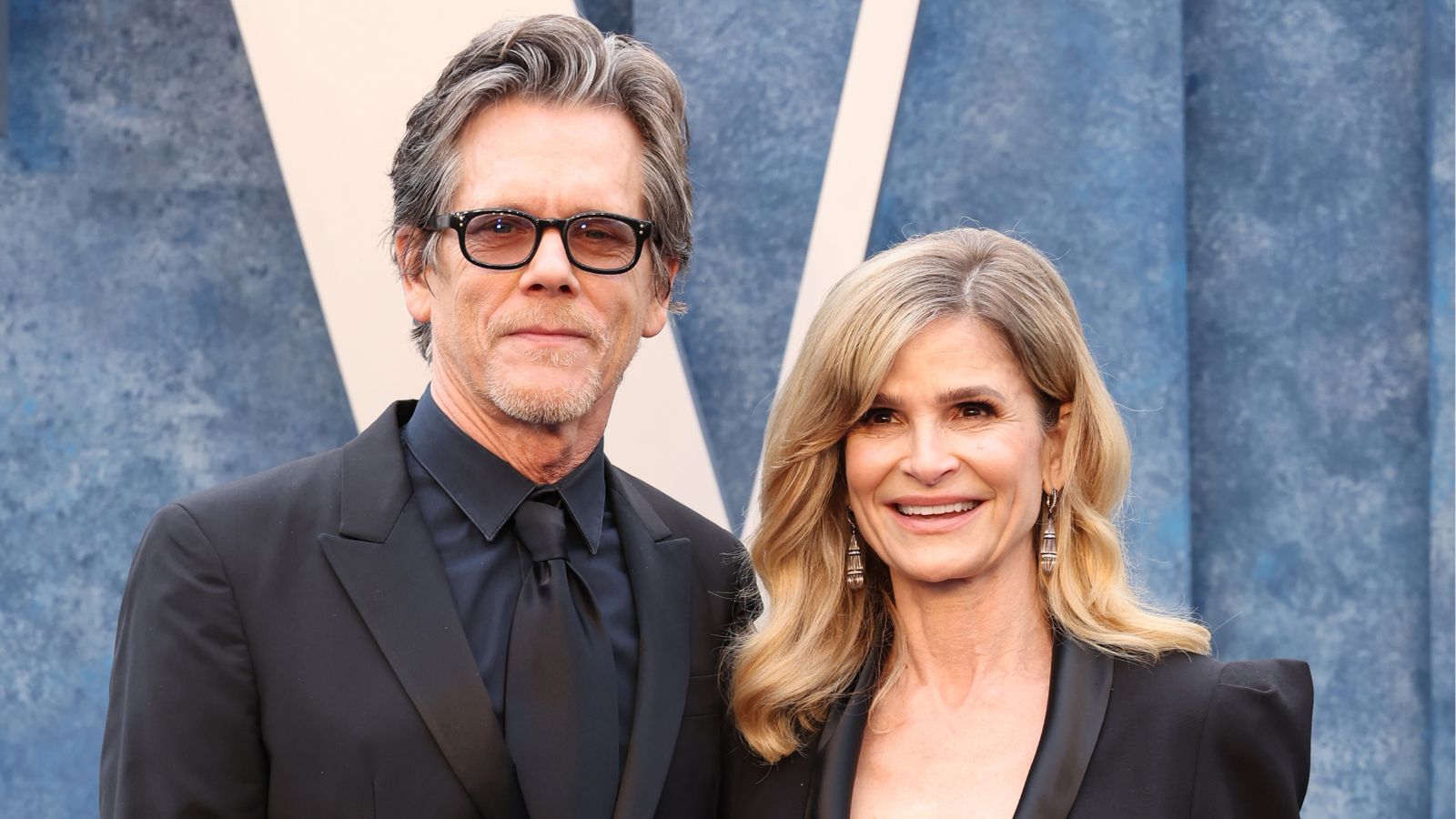 Kevin Bacon and Kyra Sedgwick's rustic kitchen island is stunning, but controversial – designers say you can get the look without the hassle
Kevin Bacon and Kyra Sedgwick's rustic kitchen island is stunning, but controversial – designers say you can get the look without the hassleA popular material finds an unorthodox home in the couple's kitchen, but experts disagree on whether it should be used – here's how to do it instead
By Sophie Edwards
-
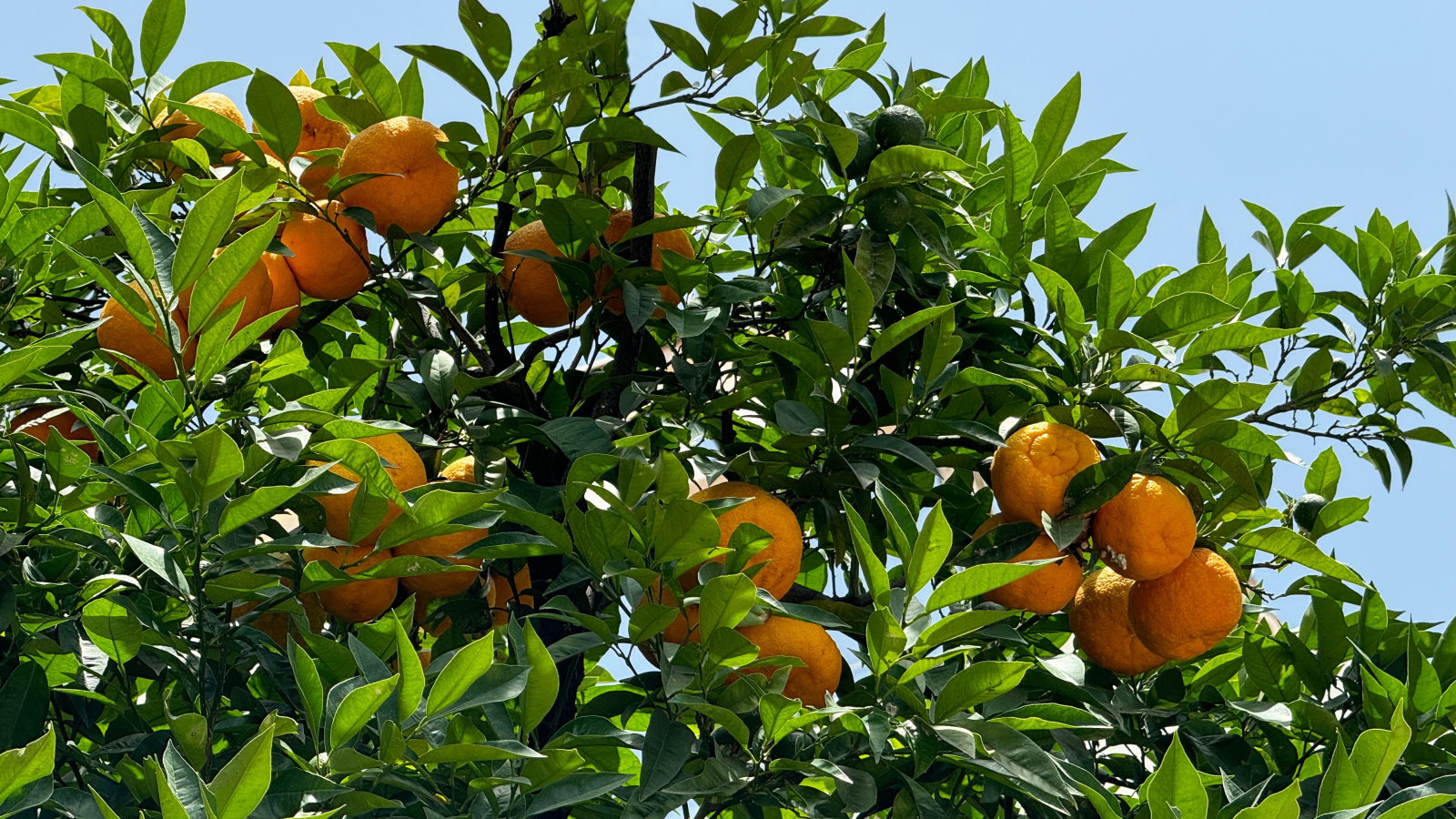 How to grow grapefruit for homegrown sweet and tangy, highly nutritious harvests – a fruit tree expert shares their planting and care tips
How to grow grapefruit for homegrown sweet and tangy, highly nutritious harvests – a fruit tree expert shares their planting and care tipsFrom planting to harvesting, this is all you need to know about grapefruit trees
By Drew Swainston
-
 How to grow crepe myrtle in pots – and transform even the smallest of yards with dazzling flowers this summer
How to grow crepe myrtle in pots – and transform even the smallest of yards with dazzling flowers this summerGrowing crepe myrtles in pots will inject splashes of brilliant color into your outside space
By Thomas Rutter
-
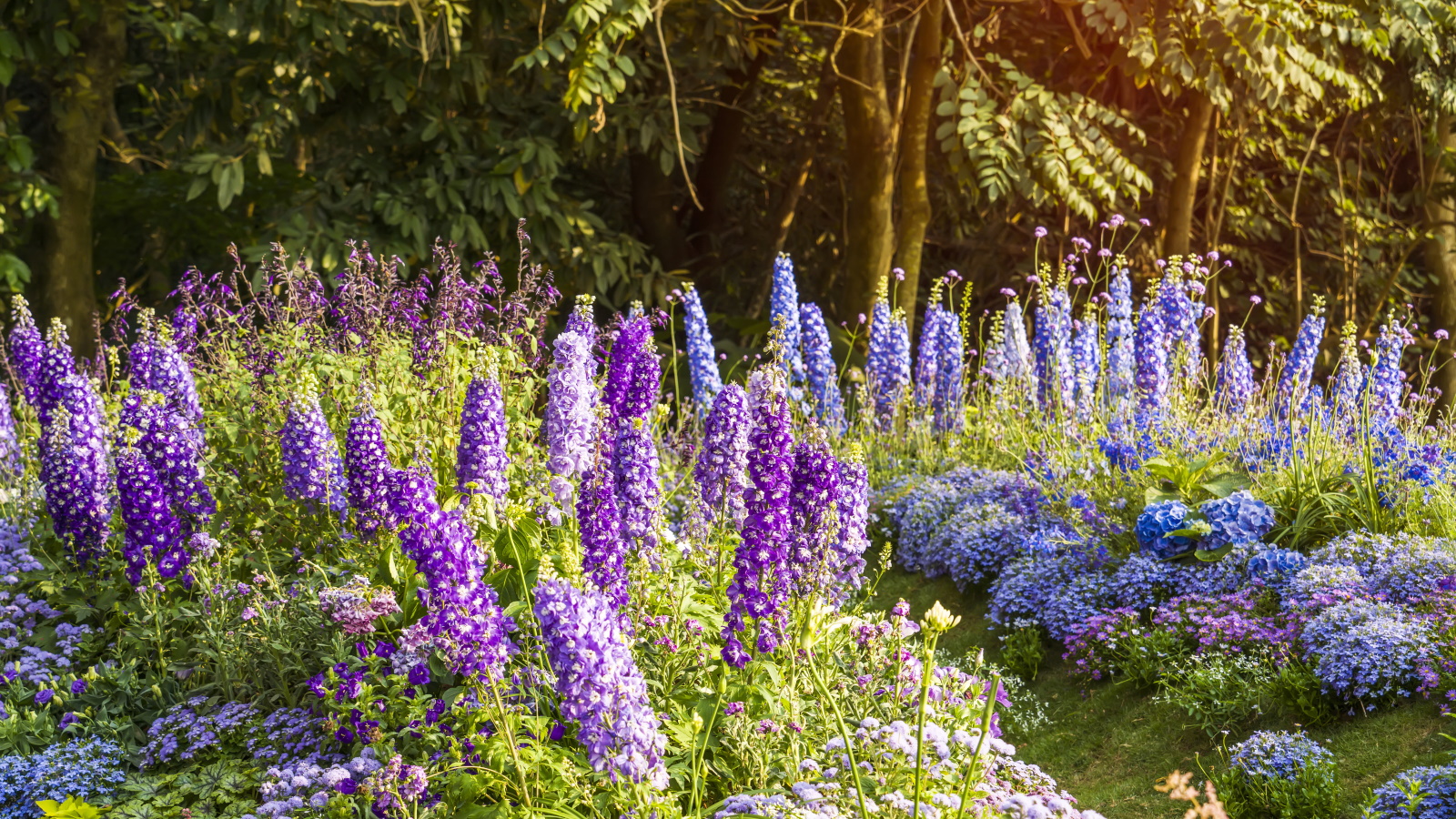 Best types of delphiniums – 14 stunning varieties for vibrant flower spikes in your yard
Best types of delphiniums – 14 stunning varieties for vibrant flower spikes in your yardPlants Here are our top types of delphiniums for brightening summer borders
By Holly Crossley
-
 How to grow impatiens – garden experts reveal the secrets to growing this shade-tolerant, sparkling summer plant
How to grow impatiens – garden experts reveal the secrets to growing this shade-tolerant, sparkling summer plantBoth 'Busy Lizzie' and 'New Guinea' impatiens can thrive in shady yards
By Ellen Wells
-
 How to grow astilbe – expert advice on cultivating this shade-tolerant flowering perennial
How to grow astilbe – expert advice on cultivating this shade-tolerant flowering perennialShade-tolerant and pest-resistant - astilbe are hardy and tough perennials that can thrive in many settings
By Ellen Wells
-
 7 native perennials to plant in April – for glorious flowering displays to attract bees, butterflies, and hummingbirds
7 native perennials to plant in April – for glorious flowering displays to attract bees, butterflies, and hummingbirdsDiscover some of the best perennials to plant in April to make your garden a hotspot for wildlife
By Drew Swainston
-
 Is the viral salt hack the secret to a weed-free patio? A garden expert warns of irreparable, long-term damage – plus reveals the safest way to get results
Is the viral salt hack the secret to a weed-free patio? A garden expert warns of irreparable, long-term damage – plus reveals the safest way to get resultsYou might have seen gardeners on TikTok or Instagram using salt to kill weeds in pavers, but this hack should be avoided at all costs
By Thomas Rutter
-
 Worst-smelling plants to avoid – experts reveal 5 pungent species and suggest perfumed options to grow instead
Worst-smelling plants to avoid – experts reveal 5 pungent species and suggest perfumed options to grow insteadThese are some of the worst-smelling plants that can cause quite a stink
By Thomas Rutter
-
 7 shrubs to plant in April to transform beds and borders – including native plants and bushes suitable for dry or wet spots
7 shrubs to plant in April to transform beds and borders – including native plants and bushes suitable for dry or wet spotsThese shrubs can bring flowers, texture, and fragrance, as well as attracting beneficial insects and birds
By Drew Swainston